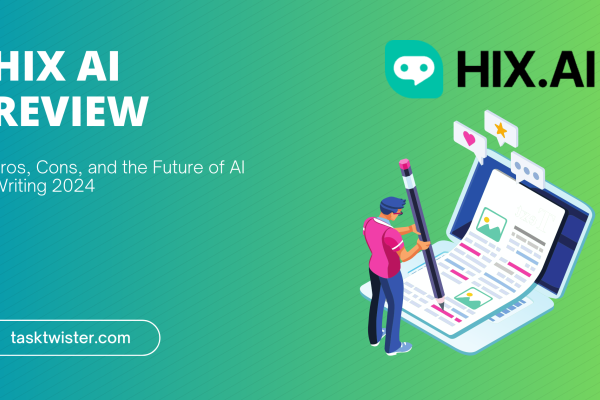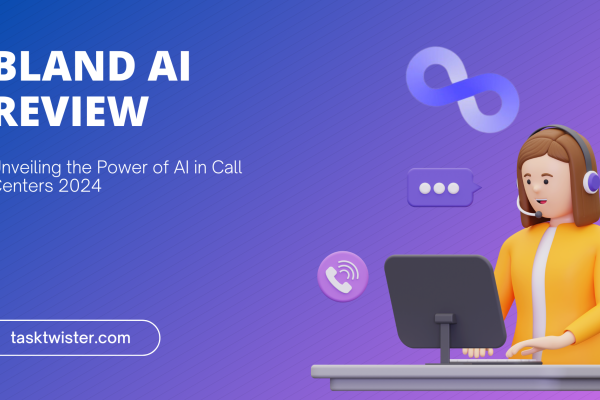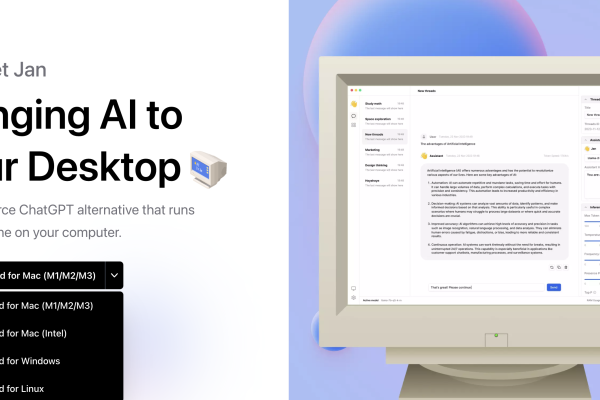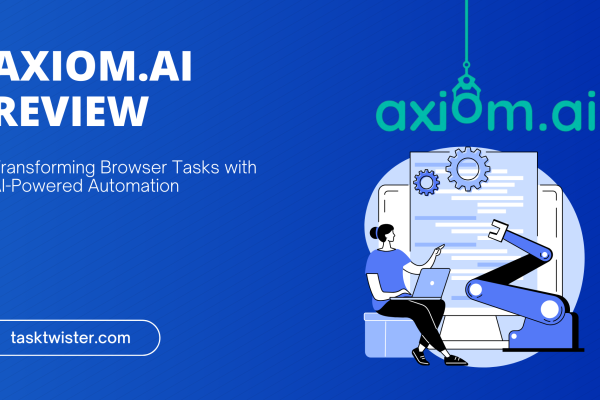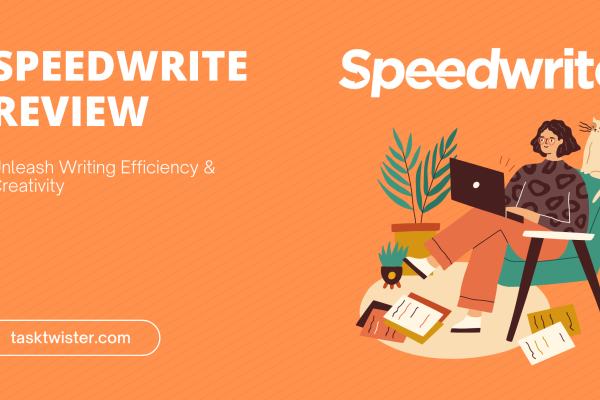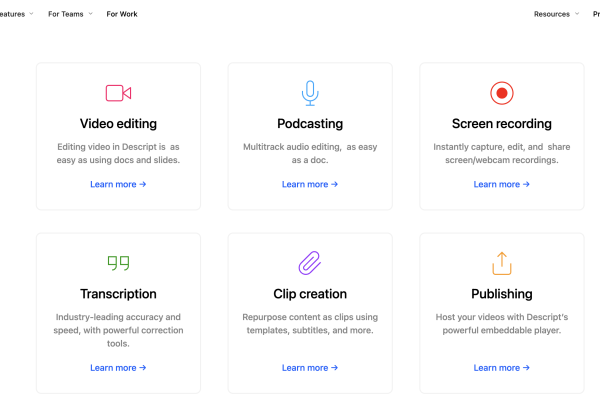Writefull Review 2023: Unleashing AI Power in Academic Writing
Noah
Table of Contents
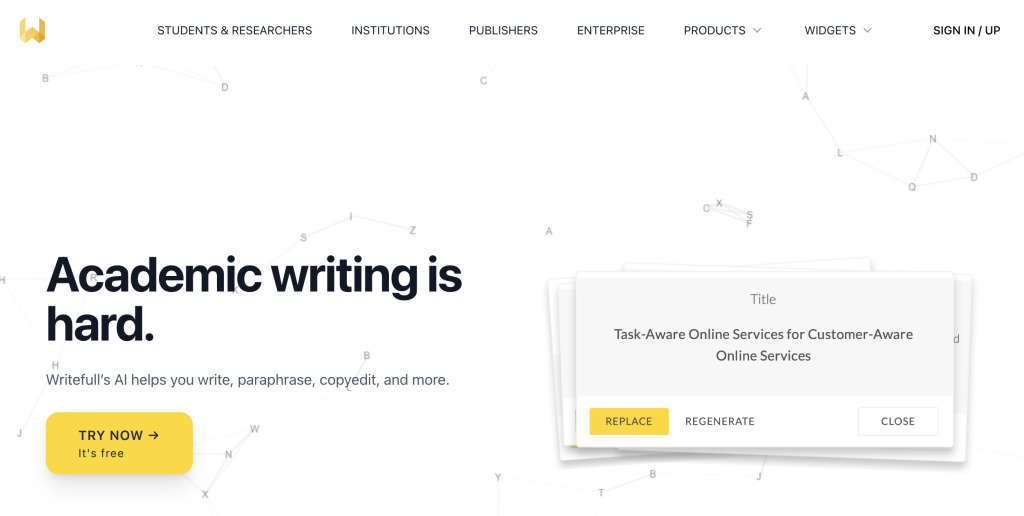
Chapter 1: Introduction to Writefull
1.1. Overview of Writefull: An AI-Powered Writing Assistant
In the realm of academic writing, the emergence of AI language feedback tools has been a game-changer. Among these innovations, Writefull has carved out a significant niche. This comprehensive Writefull review aims to delve into how this AI-powered writing assistant is revolutionizing the way academics approach writing.
- Writesonic Review: Transforming Your Writing Experience with AI
- Veed.io: Your Ticket to Video Editing Superstardom, Right in Your Browser
- AdCreative.ai Review: Your Secret Weapon for High-Converting Ads 2024?
- HARPA AI: A Comprehensive Guide to Web Browsing and Automation
- Revoicer – Leading the revolution in voice technology 2023
Writefull stands out as a sophisticated text analysis software, seamlessly blending into the toolkit of any serious writer. It’s not just another software for students; it’s a robust academic writing tool designed to cater to the intricate needs of scholarly writing. From offering advanced editing features to facilitating seamless Overleaf integration, Writefull is more than just a writing aid; it’s an academic partner.
You are viewing: Writefull Review 2023: Unleashing AI Power in Academic Writing
1.2. The Growing Importance of AI in Academic Writing
The infusion of AI into academic writing tools isn’t just a trend; it’s a transformative shift. In this digital era, the need for efficient, accurate, and time-saving writing aids is more pronounced than ever. Writefull leverages AI-powered suggestions to elevate the quality of academic writing. Its ability to integrate with platforms like Microsoft Word and Overleaf makes it a versatile and indispensable tool for scholars and researchers alike.
The emergence of Writefull in educational institutions highlights the growing reliance on AI for enhancing academic standards. With features like the Writefull GPT Detector, the tool assures the integrity and originality of written content, a paramount concern in academic circles.
Furthermore, Writefull’s comparison with other language checking tools, such as Grammarly, reveals its specialized focus on academic writing. While Grammarly provides a broad spectrum of writing assistance, Writefull tailors its services to meet the specific demands of academic writing, offering a more targeted and nuanced approach.
In the landscape of Writefull alternatives, what sets it apart is the precision and adaptability of its AI engine. The Writefull plugin for Word and other writing environments demonstrates the platform’s commitment to enhancing user experience and boosting writing efficiency.
Chapter 2: In-Depth Analysis of Writefull’s Features
2.1. Writefull for Word: Enhancing Microsoft Word Experience
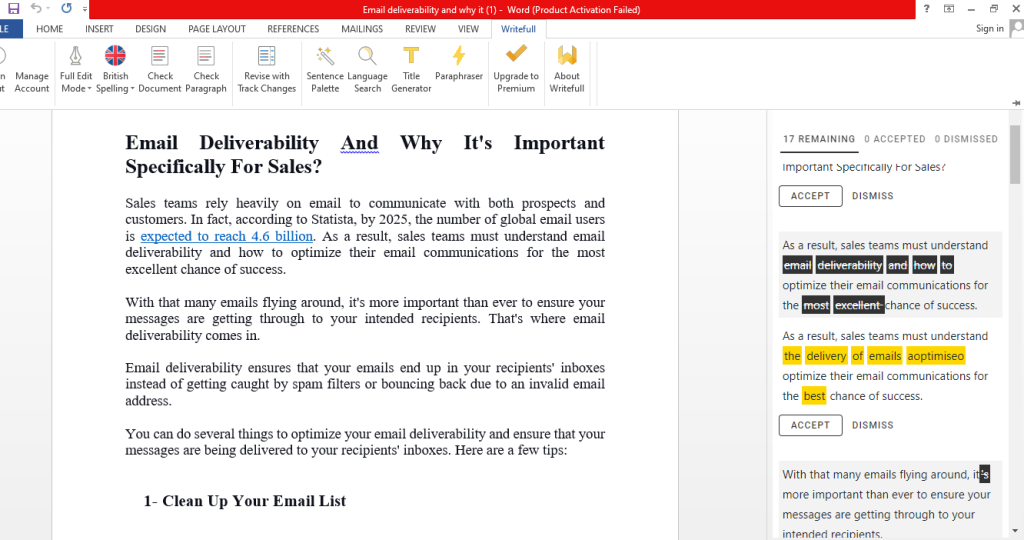
In the sphere of academic writing, efficiency and accuracy are paramount. Writefull for Word superbly addresses these needs, emerging as a premier text analysis software. Integrating seamlessly with Microsoft Word, this Writefull plugin offers AI-powered suggestions that refine and elevate the quality of academic writing.
- Real-time Feedback: Writefull for Word provides instantaneous language feedback, crucial for maintaining the flow of ideas.
- Contextual Suggestions: Leveraging advanced AI algorithms, it suggests improvements tailored to the academic context.
2.2. Writefull for Overleaf: A LaTeX Writing Companion

For those immersed in the LaTeX ecosystem, Writefull’s Overleaf integration represents a significant leap forward. Merging the precision of LaTeX with the intelligence of AI, Writefull becomes more than just an academic writing tool; it transforms into an indispensable writing partner.
- Seamless Integration: Writefull’s compatibility with Overleaf ensures a hassle-free user experience, essential for focused academic writing.
- Specialized Support: Specifically designed for LaTeX users, it addresses the unique challenges faced in this environment.
2.3. Writefull Revise: The AI Editor

At the core of Writefull’s offerings lies Writefull Revise. This feature stands out as a testament to the software’s commitment to delivering precise and contextually relevant writing assistance.
- Grammar and Style Enhancement: Writefull Revise fine-tunes grammar and stylistic elements, crucial for academic writing’s stringent standards.
- Customized Feedback: It offers tailored suggestions, ensuring that each piece of writing retains its unique voice while adhering to academic conventions.
2.4. Writefull Cite: Simplifying Citations in Academic Writing
Navigating the complex world of academic citations is now more manageable with Writefull Cite. This feature simplifies the citation process, a boon for researchers and students alike.
- Automated Citations: Writefull Cite efficiently generates accurate citations, reducing the time and effort spent on this often tedious task.
- Diverse Style Formats: It supports various citation styles, accommodating the diverse needs of academic disciplines.
2.5. GPT-Detector: Identifying AI-Generated Text

In an era where AI-generated content is becoming ubiquitous, the Writefull GPT Detector emerges as a critical tool for maintaining academic integrity.
- Reliable Detection: The GPT Detector accurately identifies AI-generated text, ensuring the authenticity of academic work.
- Enhanced Accuracy: Continuous updates to the GPT Detector augment its detection accuracy, keeping pace with evolving AI writing technologies.
Chapter 3: Personal Experience with Writefull
3.1. Installation and Integration Process
See more : Copy.ai: A Comprehensive Guide with Expert Tips
My journey with Writefull began with its integration into my writing routine, a process I found surprisingly straightforward. The ease of installation, especially for Writefull for Word, was a notable highlight. As a frequent user of Microsoft Word, the plug-and-play nature of this academic writing tool was a significant advantage.
- Effortless Setup: Installing Writefull was a matter of minutes, without any complex steps.
- Seamless Integration: The software effortlessly melded with Word, offering a smooth transition for my writing activities.
3.2. Real-world Use Cases and Effectiveness
As I delved deeper into using Writefull, its practical applications in various writing scenarios became apparent. Whether it was drafting research papers or preparing academic articles, Writefull’s AI language feedback proved invaluable.
- Enhanced Writing Quality: The AI-powered suggestions noticeably improved the clarity and coherence of my writing.
- Time Efficiency: Tasks that typically took longer, like editing and revising, were significantly expedited.
3.3. Navigating the Limitations and Workarounds
No tool is without its limitations, and Writefull is no exception. I encountered a few challenges, particularly with the Writefull GPT Detector. While generally accurate, there were instances where its detection capabilities seemed inconsistent.
- Occasional Misjudgments: The AI sometimes flagged non-AI content, requiring manual review.
- Finding Workarounds: I learned to use these features as a guide rather than an absolute authority.
Chapter 4: Pricing and Accessibility
4.1. Understanding Writefull’s Pricing Model
In evaluating Writefull, an essential aspect to consider is its pricing structure, which plays a pivotal role in its accessibility and practicality for its target audience. Writefull’s pricing model is designed with flexibility in mind, catering to a diverse range of users, from individual students to educational institutions.
- Tiered Pricing Strategy: Writefull offers various pricing tiers, accommodating different user needs and budgets. This approach ensures that both individual users and larger organizations can find a suitable package.
- Free vs. Premium Options: The software provides basic functionalities for free, which is a significant advantage for students and educators. For more advanced features, users can opt for the premium version.
4.2. Evaluating the Value Proposition for Students and Academics
The value proposition of Writefull for its core user base, primarily students and academic professionals, is a critical factor in its overall assessment.
- Cost-Benefit Analysis for Students: For students, the cost of software can be a deciding factor. Writefull’s free version serves as an excellent starting point, offering substantial functionalities without financial burden. The premium version, while requiring investment, brings advanced editing features and AI language feedback, which can be invaluable for higher-level academic writing.
- Institutional Subscriptions: Educational institutions stand to gain significantly from Writefull’s comprehensive features. The pricing for institutional subscriptions is a key consideration, with the potential to provide widespread access to a powerful academic writing tool.
Chapter 5: Pros and Cons: A Balanced View
5.1. Advantages of Using Writefull
Delving into the Writefull review, it’s essential to highlight the advantages that make this academic writing tool stand out in a crowded market of language checking tools.
- Comprehensive AI Language Feedback: Writefull’s sophisticated AI algorithms provide nuanced and context-specific suggestions, enhancing both the accuracy and quality of academic writing.
- Versatility with Writefull for Word and Overleaf Integration: The software caters to a diverse user base, from Microsoft Word enthusiasts to LaTeX users, ensuring a seamless workflow across different platforms.
- Advanced Editing Features: Writefull goes beyond basic grammar checks, offering advanced suggestions on style, tone, and clarity that are crucial for academic excellence.
- AI-Powered GPT Detector: In an era where distinguishing between AI-generated and human text is crucial, the GPT Detector stands as a testament to Writefull’s commitment to upholding academic integrity.
5.2. Potential Drawbacks and Considerations
While Writefull has numerous benefits, it’s equally important to consider its limitations to provide a balanced perspective.
- Learning Curve: New users, especially those not familiar with AI writing aids, might find the initial interface and functionality of Writefull slightly overwhelming.
- Writefull Pricing Considerations: While offering a free version, the premium features, which unlock the full potential of the tool, might be beyond the reach of some individual users or smaller educational institutions.
- Dependency on Internet Connectivity: As a cloud-based service, Writefull’s performance is contingent on internet connectivity, which might be a limiting factor in some scenarios.
- Comparison with Alternatives: When compared to tools like Grammarly, users might find certain features of Writefull less intuitive or lacking in user experience polish.
Chapter 6: Comparative Analysis
6.1. Writefull vs. Other Academic Writing Tools
In the landscape of academic writing tools, Writefull stands as a notable contender. This comparative analysis aims to distinguish Writefull’s unique offerings from other similar tools.
- Functionality and Feature Set: Writefull’s advanced editing features and AI-powered suggestions offer a more focused approach compared to general language checking tools. This specificity is especially beneficial for academic writing, where nuanced language and technical precision are paramount.
- AI Language Feedback: Writefull’s AI language feedback is more tailored to academic writing than some of its competitors, providing more context-aware suggestions.
- Overleaf Integration: A distinguishing feature of Writefull is its seamless integration with Overleaf, a popular tool among researchers and scientists for LaTeX document preparation, setting it apart from many other writing aids.
6.2. AI-Powered Features: Writefull vs. Traditional Editors
The evolution of AI in writing tools has introduced a new dynamic in the comparison between AI-driven tools like Writefull and traditional text editors.
- Advanced AI Capabilities: Writefull leverages sophisticated AI algorithms for its language feedback, which traditional editors lack. This technology enables a deeper analysis of text, from grammar to style and tone.
- Real-time Assistance: Unlike traditional editors, Writefull provides real-time, AI-powered suggestions, enhancing the writing process with immediate feedback.
- Detection Accuracy: With features like the Writefull GPT Detector, the software offers an edge in identifying AI-generated content, a capability that traditional editors do not possess.
Chapter 7: Future of Writefull and AI in Writing
7.1. Anticipated Developments in Writefull’s AI Technology
As we look ahead, the trajectory of Writefull’s development in AI technology seems poised for significant advancements. Being at the forefront of academic writing tools, Writefull is expected to continue integrating cutting-edge AI functionalities.
- Enhanced AI Algorithms: Future updates may include more sophisticated AI algorithms for even more precise language feedback and text analysis.
- Expanding AI Capabilities: There’s potential for expanding AI-powered suggestions, which could encompass a broader range of writing styles and formats, adapting to diverse academic needs.
- Integration with Emerging Technologies: Writefull might explore integrating emerging technologies, like natural language processing advancements, to further refine its editing and suggestion mechanisms.
7.2. The Evolving Role of AI in Academic Writing
The role of AI in academic writing, with tools like Writefull, is set to become increasingly pivotal. This evolution will shape how students, educators, and researchers engage with academic content.
- From Assistance to Partnership: AI in academic writing tools is transitioning from a mere assistant role to a more collaborative partnership, offering more nuanced and context-aware assistance.
- Customization and Personalization: Future AI developments could allow for more personalized feedback, catering to the unique writing styles and preferences of individual users.
- AI’s Role in Research Integrity: Tools like the Writefull GPT Detector will likely evolve to play a more significant role in maintaining research integrity, with enhanced detection accuracy and the ability to adapt to new forms of AI-generated content.
Chapter 8: Final Thoughts and Recommendations
8.1. Summarizing the Writefull Experience
See more : Cohesive AI vs. ChatGPT: Unveiling the Superior AI Writing Tool
As we conclude this Writefull review, it’s clear that this academic writing tool has carved a significant niche in the realm of AI-assisted writing. Writefull stands out for its specialized focus on academic writing, offering a suite of features that cater to a diverse range of needs within the academic community.
- User-Centric Design: Writefull’s design philosophy, focusing on the user experience, is evident in its intuitive interface and the seamless integration with platforms like Microsoft Word and Overleaf.
- Precision in AI Language Feedback: The advanced editing features and the accuracy of AI-powered suggestions highlight Writefull’s commitment to enhancing the quality and integrity of academic writing.
- Adaptability Across Disciplines: Writefull’s versatility makes it a valuable tool for a wide array of academic fields, demonstrating its effectiveness in handling various writing styles and formats.
8.2. Recommendations for Specific User Groups
Based on the comprehensive analysis presented in this review, specific recommendations can be made for different user groups considering Writefull.
- Students and Researchers: For individuals in academia, Writefull offers an invaluable resource for improving writing quality and efficiency. Its AI language feedback and GPT Detector are particularly useful for maintaining the originality and integrity of academic work.
- Educational Institutions: Writefull is an excellent addition to the toolkit of educational institutions, providing a resource that can benefit both educators and students. The tool’s capabilities in enhancing academic writing make it a worthy investment for institutions aiming to improve writing standards.
- Comparison with Alternatives: When compared to alternatives like Grammarly, Writefull’s specialized focus on academic writing gives it an edge, especially for users seeking more advanced editing features and academic-specific feedback.
FAQs Section
How does Writefull compare to other AI writing tools in terms of accuracy?
When it comes to accuracy, Writefull stands out in the realm of academic writing tools. Its specialized focus on academic language ensures that the AI language feedback is contextually relevant and precise. Compared to general writing aids like Grammarly, Writefull’s algorithms are fine-tuned to grasp the nuances of academic writing, offering more detailed and accurate suggestions.
- Focus on Academic Specificity: Writefull’s AI is designed to understand and support the complexity and style of academic writing, which might not be the primary focus of other AI writing tools.
- Advanced Editing Features: The tool’s ability to provide in-depth feedback on writing style, grammar, and syntax positions it as a highly accurate resource for academic writers.
Can Writefull be effectively used by non-academic writers?
While Writefull is primarily designed for academic writing, its robust features make it a useful tool for non-academic writers who require detailed and precise language feedback. Its advanced editing features and AI-powered suggestions can enhance the clarity and coherence of any written content.
- Versatility of Features: Writefull’s range of functionalities, from grammar checking to style suggestions, can be beneficial for various types of writing beyond academia.
- User Experience: Non-academic writers can also find value in Writefull’s intuitive interface and user-friendly design, making it accessible for a broader audience.
What are the system requirements for integrating Writefull with Word or Overleaf?
To integrate Writefull with Word or Overleaf, users need to have:
- For Writefull for Word: A compatible version of Microsoft Word installed on their device. Writefull plugin should be compatible with the most recent versions of Word.
- For Writefull for Overleaf: A stable internet connection for accessing Overleaf online and using the Writefull Chrome extension or other browser-supported versions for Overleaf integration.
How does Writefull handle different citation styles?
Writefull is equipped to handle various citation styles, a crucial aspect for academic writing. It can recognize and suggest corrections based on popular citation formats, making it a comprehensive tool for academic research and writing.
- Adaptability to Citation Formats: Whether it’s APA, MLA, or Chicago style, Writefull provides support for the most commonly used citation formats in academic writing.
Is the GPT-Detector feature reliable for academic integrity checks?
The Writefull GPT Detector is a significant feature designed to identify AI-generated text, thereby aiding in maintaining academic integrity. Its reliability lies in its continuous updating and improvement.
- Detection Accuracy: While no AI detection tool is infallible, Writefull’s GPT Detector is continually updated to enhance its accuracy, making it a reliable option for identifying AI-generated content.
Conclusion
Wrapping Up the Writefull Review: Key Takeaways and Final Verdict
After an in-depth exploration of Writefull, it’s time to consolidate our findings and draw a conclusion. This review has navigated through the intricate features, practical applications, and the evolving landscape of this academic writing tool, providing a comprehensive understanding of its capabilities and limitations.
Key Takeaways:
- Specialized Academic Focus: Writefull shines as an AI-powered writing assistant specifically tailored for academic writing. Its unique features, like Writefull Revise and Writefull Cite, demonstrate a deep understanding of academic writing needs.
- AI-Powered Efficiency: The advanced AI language feedback and AI-powered suggestions have proven to be game-changers, offering unparalleled support in refining academic writing.
- User-Friendly Integration: Writefull’s integration with popular writing platforms like Microsoft Word and Overleaf has been seamlessly executed, enhancing the user experience significantly.
- Pricing and Accessibility: The flexible pricing model of Writefull makes it accessible to a wide range of users, from individual students to educational institutions.
- Comparative Advantage: When compared to alternatives like Grammarly, Writefull’s specialized academic focus gives it a distinctive edge, particularly for users in need of more advanced academic writing support.
Final Verdict:
Writefull stands out as a robust and reliable academic writing tool. Its commitment to enhancing the quality of academic writing through innovative AI technology makes it an invaluable asset for students, researchers, and educational institutions. While it faces some competition in the broader landscape of language checking tools, its specialized features and academic-centric design position it as a top-tier choice in its category.
For those seeking a comprehensive, AI-enhanced academic writing assistant, Writefull is undoubtedly a tool worth considering. Its blend of advanced technology, user-centric design, and academic focus combine to make it a standout choice in the market. Whether for drafting research papers, dissertations, or other academic documents, Writefull offers the precision, efficiency, and adaptability needed to elevate the quality of academic writing.
In conclusion, Writefull encapsulates the essence of what modern academic writing tools should aspire to be, setting a high standard in AI-assisted writing and emerging as a leader in its field.
Find out more similar products in the AI Tools Text and Writing
Latest Articles
Most views
Related Articles
Source: http://tasktwister.com
Category: AI









